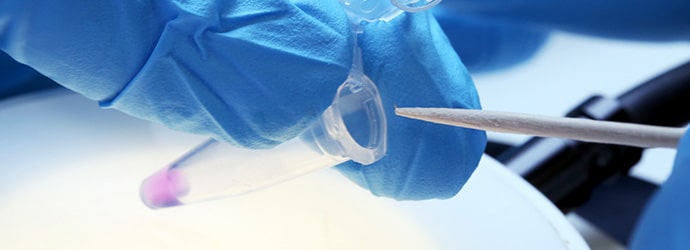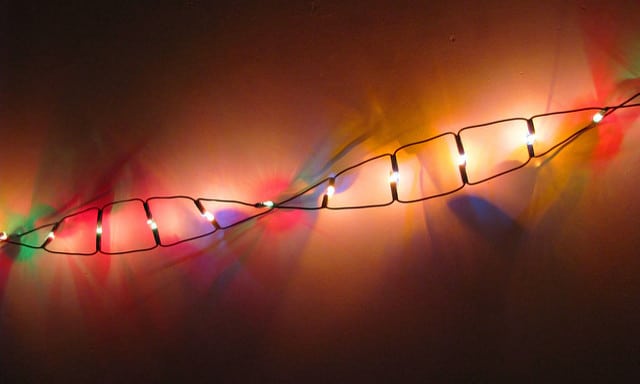The A to Z of Histological Stains
From Alkaline phosphatase to Warthin-Starry, we take you through the various histology stains available.
Join Us
Sign up for our feature-packed newsletter today to ensure you get the latest expert help and advice to level up your lab work.
Search below to delve into the Bitesize Bio archive. Here, you’ll find over two decades of the best articles, live events, podcasts, and resources, created by real experts and passionate mentors, to help you improve as a bioscientist. Whether you’re looking to learn something new or dig deep into a topic, you’ll find trustworthy, human-crafted content that’s ready to inspire and guide you.

From Alkaline phosphatase to Warthin-Starry, we take you through the various histology stains available.
Next generation sequencing opened the doors to our genome. It gives massive amounts of information in a week – whereas Sanger sequencing takes thrice as long, and causes lab lesions due to the abusive use of pipettes. Indeed, with minimal hands-on procedures we obtain a lot of data. But nothing in Science is ever easy….

Rapid genomic analysis offered by next generation sequencing (NGS) is ideal for personalized medicine approaches to clinical genetics, microbiological profiling, and diagnostic oncology. Many standard clinical samples are preserved as formalin-fixed, paraffin-embedded (FFPE) tissues, which presents obstacles for use in NGS analysis. FFPE tissue preservation has the benefit of keeping samples intact for histological examination…
Construction of high-quality sequencing libraries is pivotal to successful NGS, and DNA quality is one of the most critical aspects of library preparation. As this Nature Methods paper illustrates, DNA shearing involves appropriate and consistent fragment sizes for sensitive and accurate sequencing, and the fragments must be accurately analyzed prior to sequencing to measure molarity…
Bacteria are the workhorses of many molecular biology laboratories, and mastering the basic techniques to manipulate bacteria is an important stepping-stone towards achieving great results. When isolating DNA from bacteria, it is important to start with a single colony to ensure a homogenous population of bacteria in your culture. Isolating a single bacterial colony from…
The intriguing thing about protein expression is that the combination of transfer RNAs (tRNAs) that translate the 3 letter codon into an amino acid (aa) far exceeds the number of existing amino acids (aa). If you do the math correctly, the maximum number of unique combinations using the triplet code to code for the 4…

When you are a newbie to qPCR or qRT-PCR, it is quite common to write everything down in your lab notebook and then tediously mark off reagents or samples as you add them. People typically start with a master mix for items you add to multiple samples such as (Mg2+, dNTPs, 10X PCR buffer, additives,…
Most of us are aware of genetic engineering systems like Cre-Lox, TALENs, Zinc finger systems, and of course, CRISPR-Cas9. These are all examples of CSSR- Conservative Site-Specific Recombination. We use these site specific recombinases routinely, but do we really know about them or what the future hold for these tools? It turns out that CSSR…
If you are a plant biologist and working with the model plant Arabidopsis thaliana, undoubtedly you are a great fan of The Arabidopsis Information Resource (TAIR). You also probably order seeds/materials from the Arabidopsis Biological Resource Center (ABRC), or request them from fellow scientists. Of course, seeds are one of the basic materials you…

The unique feature of real-time quantitative polymerase chain reaction (RT-qPCR) is that it associates the amplification of your target gene with a fluorescent signal in a quantifiable manner. Presently, there are numerous fluorescent tool kits/methods to consider when designing your RT-qPCR experiment. However, the two major categories to choose from are fluorescent intercalating dyes and…

Matrix-assisted laser desorption/ionization (or simply, MALDI) is a type of mass spectrometry method. If you are new to mass spectrometry, check out our excellent primers, titled How Does Mass Spec Work and Get Out of Western Blot Hell: An intro to Mass Spec. Basically, however, mass spectrometry allows you to measure, sort, and quantify small…

DNA sequencing is the most powerful method to reveal genetic variations at the molecular level, leading to a better understanding of our body in physiological settings, and pathological conditions. It is the beginning of the long road towards better diagnostics and personalized medicine. Even though there have been great advances in DNA sequencing technologies there…

Who amongst us hasn’t had the need for oligonucleotides in an experiment? It is a cornerstone in many procedures and techniques. Depending on the goal, it can be very hard to design just the right oligo for your experiment. Oligos must have the right length; the right amount of C-G, T-A; they can’t form secondary…

Primary cultures of rodent (rat and mice) neurons are widely used for disease modeling and studying cellular mechanisms in neurobiology, using a variety of techniques including neurobiology imaging. If you are in this field and need help with protocols and batch-to-batch variability of your dissociated primary rodent neurons, read further below. Also, consider watching several…
Flow cytometry is a pervasive tool to characterize just about anything in cell biology. From quantifying the expression of surface antigens, to determining the physiological changes in cells and everything in between, flow cytometry is as indispensable to a cell biologist as a knife is to a surgeon. Cell sorting is pivotal in enabling researchers…

As any good biologist knows, one of the easiest ways to determine if a cell is functionally active is the production and secretion of proteins in response to a stimulus. In many circumstances, the quantity of the secreted protein, and thus the level of cellular activation can be assessed by ELISA. However, if you are…
The amount of data requiring long-term storage is growing and accelerating. Current long-term digital storage technology cannot keep up. Imagine roughly 2.5 QUINTILLION bytes of data being created everyday in this world1–2 as more computers and network infrastructure come online. For average users, a long-term storage solution is probably not an issue. However, organizations and…
Monoclonal antibodies are extensively used in research laboratories, diagnostic products and immunotherapy and have multiple advantages over polyclonal antibodies. They exhibit enhanced specificity to single epitopes, have little or no variability, and are easy to modify and customize as required. The History of Monoclonal Antibodies In 1984, Georges Köhler, César Milstein, and Niels Jerne received…
We use fluorescent in situ hybridization (FISH) techniques routinely to detect DNA or RNA sequences in tissues, but what about micro RNAs (miRNAs)? No worries, FISH is now optimized to meet the challenge. To help you get going with the method, here’s what you need to know. The first thing that comes to mind when…

Purchasing a microscope camera is one of the most daunting tasks you might have to undertake. Before you set out to buy that camera, carefully consider your applications. Things like sample brightness or the speed of the phenomenon you are trying to capture can dictate your choices. Also, this is the time to make peace…
In a previous article, we took a quick journey through the wonderful world of microbes. Let’s take a step back now and have a closer look at the benefits of microbes. We will also look at reasons to avoid many of them. For example, the ‘plague’ which is caused by a particularly nasty bacteria called…
Interested in the detailed structure of your tissue? High-resolution imaging techniques, such as brain electron microscopy, provide an intricate view of your tissue. While it may be a rather complicated procedure with nasty chemicals, the advantages of epon embedding can make it the best choice for morphological studies. The hard blocks are excellent for structural…

Tissue embedding and sectioning is a backbone of many biological research labs. While commiserating with other grad students over tedious hours spent in the lab, you’re probably aware that there is more than one way to slice up a chunk of tissue. We’ve previously introduced what to consider when choosing a tissue embedding medium and…

It often happens that you do everything right with a PCR. You have perfectly isolated template DNA, used sterile tubes and tips, used clean reagents, and said a quick prayer to the PCR Gods. And still, something unknown messes up your results. This unknown at work is generally a PCR inhibitor. Before you blame it…

The Genetic Code: A Universal Template for Protein Translation All known organisms share the ‘central dogma’ of molecular biology. DNA is transcribed into mRNA that is translated into protein. During the discovery of the genetic code, Francis Crick hypothesized that translation required a mediator to aid mRNA-guided translation according to a number of specifics. Amongst…
Not all antibodies are valid for every experiment and condition, and they must be validated for the specific application and species. Currently, there is no standard means of “antibody validation,” and this can greatly impact experimental reproducibility and reliability. Journals and granting agencies have taken steps to address this gap. Many now require you to…
Are you trying to figure out how to calculate intensities of fluorescently-labeled single cells? Do you have cells at high densities or present in clusters? Are you worried that your current cell imaging analysis software is unable to mark clear boundaries around each cell in a cell cluster? Don’t fear, because CellProfiler 2.1 is here to…

The Cre-loxP recombination system is routinely used for the generation of mouse knockouts. In part 1 of this mini-series, I introduced the concept and applications of Cre-loxP. As with any other technology or research tool, it has limitations and pitfalls that need to be considered while planning experiments or interpreting results. This article will take…

Get tips and tricks for performing CRISPR-Cas9 editing in Drosophila.

Designing a CRISPR experiment can be daunting. We’ve got tips and pointers to help you get off on the right foot.

Used for matching organ transplants to donors and other applications, human leukocyte antigen (HLA) typing is rapidly shifting from older methods to NGS technologies. This is a major step forward, as more complete views of the highly polymorphic HLA genes provide a deeper understanding of how a person’s natural genetic variation might affect transplant matches…

PCR was actually one of the first lab techniques I learned as an undergrad. Despite being sometimes labeled as a pretty basic lab skill, PCR doesn’t always work as expected. This “fickle” success is due to small details or hidden hazards within the PCR workflow that can cause your seemingly uncomplicated experiment to fail. This…
Phage display – the process of genetically fusing antibody fragments with phage to identify binding partners to your protein of interest – was covered pretty thoroughly here over the past few months. The success of this assay predicates on creating a diverse library of up to 1012 genes coding for these antibody fragments. Despite being…

Hello again, fellow Flow Cytometry Fan! It looks like you have your experiment all planned out, including staining protocols and gating schemes, and are ready to get some paradigm-shifting data. But before we start “plugging-and-chugging” samples through your cytometer of choice, we need to make sure that the nozzle size and sheath pressure are set…

If you want the kind of fluorescent IHC images worth those extra color publication charges, you’ve come to the right place. Read on for tips and tricks to getting stellar IHC staining.
Unpacking the Daunting Task of Stereology for Electron Microscopy Electron microscopy provides fantastic detail and resolution, with brain electron microscopy allowing visualisation of neurons and their individual synaptic connections. You may find yourself needing to count these neurons or connections, which can easily go into the billions. But counting these one-by-one isn’t really feasible. This…
To successfully edit your genome of interest, one critical step is to test the sgRNA you have designed. Fortunately there are programs that have been developed such as CRISPRscan for zebrafish, SSC, Sequence Scan for CRISPR, or WU-CRISPR that you can use to predict the efficiency and the suitability of the sgRNA. However, the prediction…

You might have heard of the Cre-loxP system even if you are not directly working with genetic manipulation. The Cre-loxP system is an ubiquitous technology for genetic manipulation and a mainstay in mouse research labs. With this system you can delete genes in cells, specific tissues and even whole organisms! You can start to master this system by…
My phone’s email notification went off, and I rolled over in bed to look at the clock. Saturday, 5 am. Wonderful. Who would email me at that hour? It had to be my undergraduate research PI. I unlocked my phone. Yep. Doesn’t he ever sleep? Dear Casey: We are launching a new collaborative project in…
The Biopython Project is an amazing initiative that helps scientists use Python for bioinformatics – and it’s exceptionally easy to learn! You can access online services, parse (read) different file types, analyze, and do a bunch of fun stuff with your data with Biopython. The people behind the project have put in a lot of…

The eBook with top tips from our Researcher community.